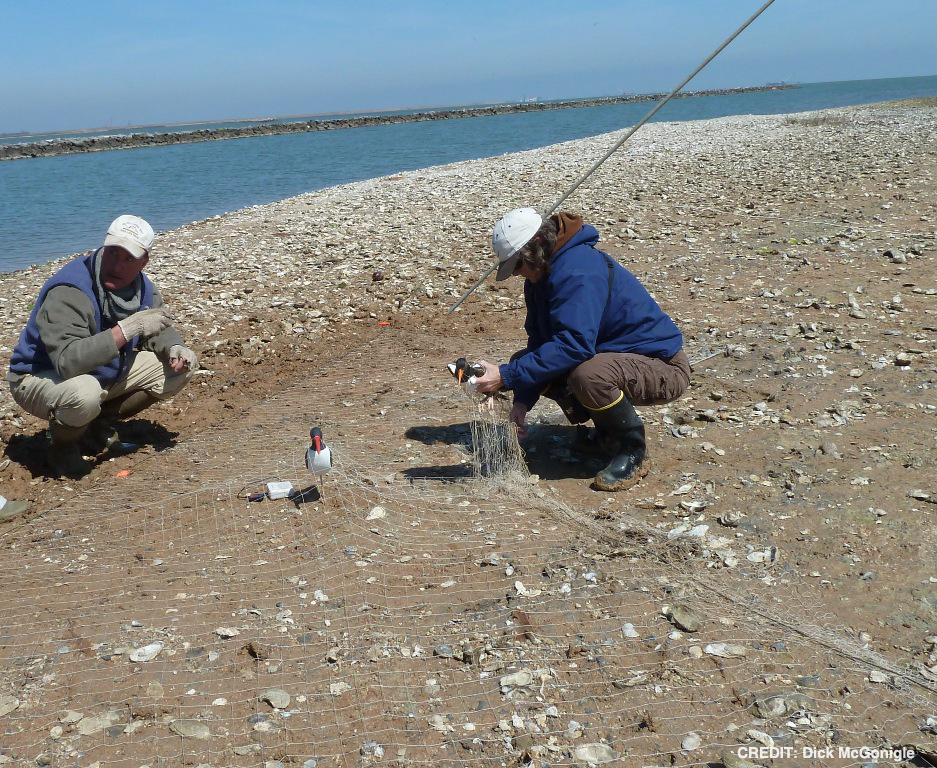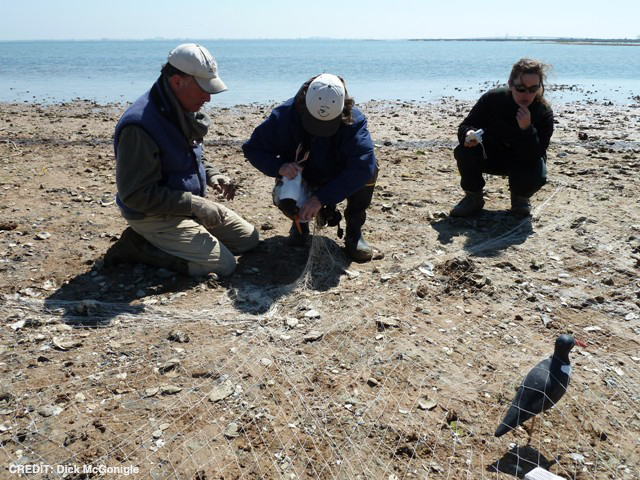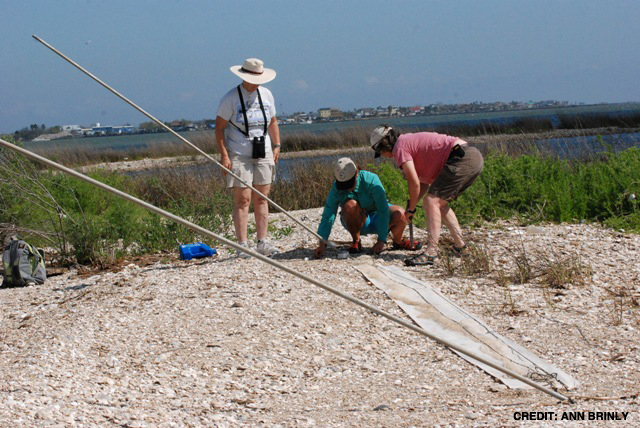
AMOY Research & Monitoring in Texas
Research
Citizen Science Monitoring Program
Gulf Coast Bird Observatory and Audubon Texas are recruiting volunteers to monitor American Oystercatcher nests along the Texas coast. If you live in coastal Texas and have access to a boat or kayak, please consider joining in on the fun to help conserve the oystercatcher population in this region! More information can be found by viewing this video.
The Oystercatcher Diaries 2014
We are blogging about the breeding of the American Oystercatchers on the Texas coast! Sneak a peak into the diaries at: http://gulfcoastbirdobservatory.wordpress.com (search “Oystercatcher Diaries” on the blog)
Background
The Western Gulf Coast population of American Oystercatcher is little studied and most knowledge is based on anecdotal evidence and assumptions. Based on an aerial survey from winter 2003, preliminary estimates of the Western Gulf Coast population, located in Texas, show it to represent approximately 5% of the U.S. population, but little is known about how or if these birds interact with regional and/or international populations, what their reproductive parameters are, and what factors may be limiting their reproductive success. Without this knowledge, it is impossible to determine how Western Gulf Coast populations fit into the U.S. population as a whole or what conservation strategies are appropriate. We are at the beginning stages of a multi-year effort to learn more about this species in Texas. Our goals are to:
- Document the population status of the Western Gulf Coast American Oystercatcher population.
- Document the breeding parameters of the Western Gulf Coast American Oystercatcher population.
- Identify threats that may limit breeding success of individuals residing in the western limits of the species range.
- Determine strategies to mitigate the identified threats.
- Implement mitigation strategies to increase breeding success of American Oystercatchers along the Western Gulf Coast.
To help determine whether Texas oystercatchers are local in distribution or are part of larger regional or international populations, we plan to implement a mark-resighting program by color banding birds during winter and spring months and recruiting and training volunteer observers to supplement staff effort for re-sighting data. This will also help us determine whether pairs remain territorial throughout the year or only during the breeding season.
After two field seasons (2011 and 2012) we have monitored 133 nests on the Upper Texas Coast (UTC) and 67 on the Central Texas Coast (CTC). The overall productivity on the UTC was .78 in 2011 and .21 in 2012. On the CTC, overall productivity was .24 in 2012. With such different productivity rates between years, it is difficult to know what the norm is and more research is needed. In 2011 Laughing Gull predation appeared to be a major factor in nest failure. In 2012, weather was the main culprit and many nests were overwashed by high tides and chicks either drowned or starved to death.
Banding
To date, we have banded 125 adults and 59 chicks. The table, Texas Banding Records, under “Texas Resources” in the left menu shows the band codes and locations for all birds banded in Texas. Band resights should be reported to Susan Heath at the Gulf Coast Bird Observatory.
Texas Banding Schemes
2010 – present: Upper Legs (both left and right): Duplicate maroon bands with white horizontal code (two white engraved horizontally-oriented letters/numbers), Lower Left leg: No band, Lower Right leg: USFWS metal band.
View Historical Banding Information (PDF).
Texas Contacts
- Susan Heath – Avian Biologist, Gulf Coast Bird Observatory
- Sasha Munters – graduate student, Department of Biology, Texas State University
- Lianne Koczur – graduate student, Texas A&M Kingsville
- Amanda Anderson – graduate student, University of Houston Clear Lake
Texas Participants
- Gulf Coast Bird Observatory
- Texas A&M University – Kingsville
- Texas State University
- University of Houston – Clear Lake




